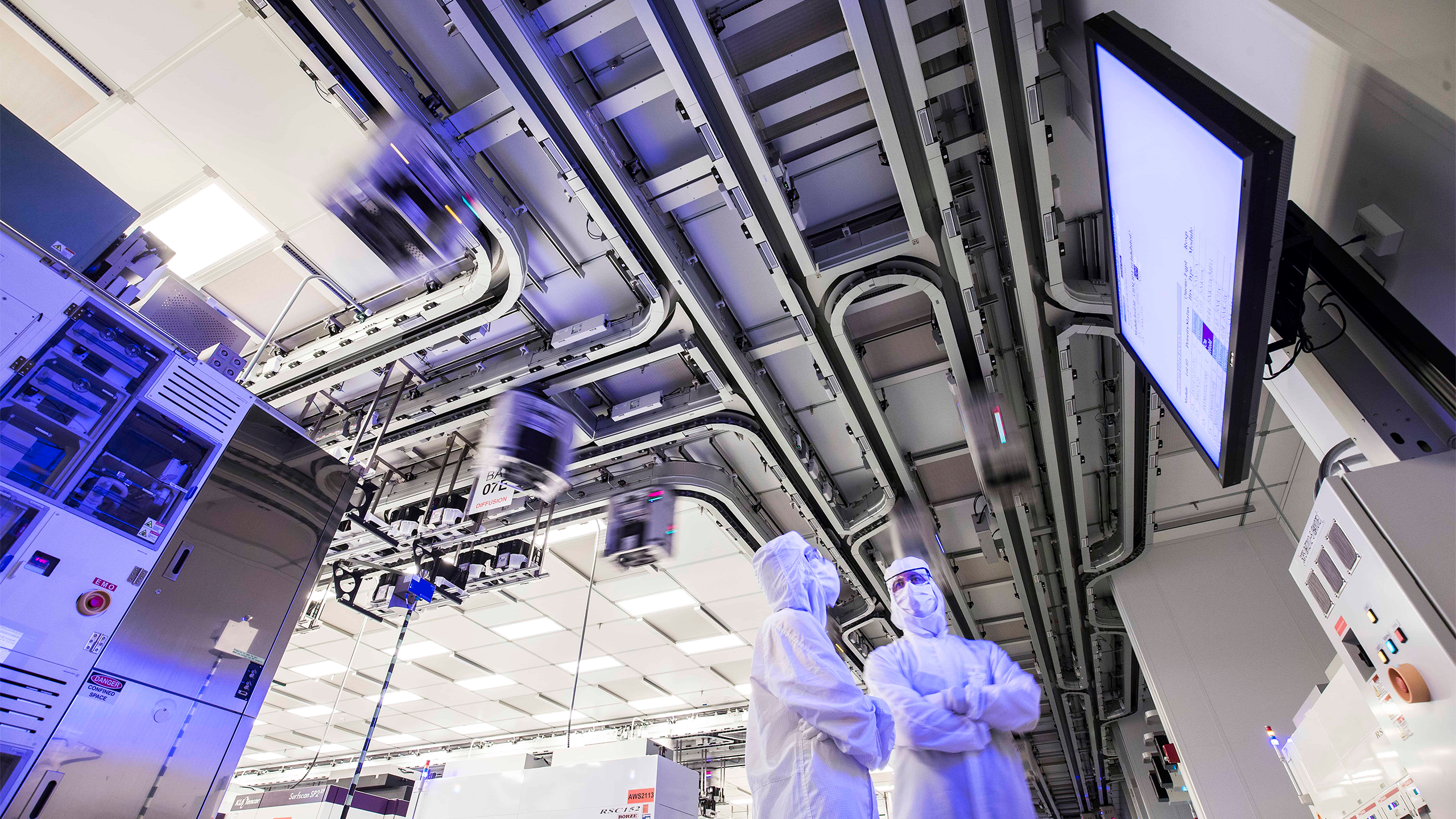Semiconductor industry faces critical talent crisis — one million additional skilled workers needed by 2030
Lack of technical talent could undermine future segment growth

The semiconductor industry is growing rapidly as demand for chips increases, as devices and applications bleed into daily life. However, the sector is facing a deep workforce imbalance, the availability of qualified professionals — especially engineers and leaders — is shrinking at an alarming rate, according to Semi. While companies and countries have their own workforce development programs, it's seemingly not at a fast enough pace to avoid a skilled workforce shortage in the coming years, which could lead to a shortfall of one million workers.
Not enough engineers for the semiconductor industry
Semi's projections indicate that by 2030, the chip industry will need to hire around one million additional skilled workers worldwide. The Semiconductor Industry Association (SIA) estimated that by 2030, there will be a shortage of 67,000 workers in the U.S. semiconductor industry alone. Europe is expected to face a shortage of over 100,000 engineers, while the shortfall in the Asia-Pacific region will exceed 200,000.
Additionally, the industry will require at least 100,000 middle-tier managers and 10,000 higher-tier leaders by 2030. However, considering the shortage of skilled workers in the semiconductor industry, many of those managers will have to come from outside the chip sector.
Sales in the semiconductor sector hit $627.6 billion in 2024, a 19.1% increase over the previous year. Advancements in the AI industry drove this, in addition to the spread of 5G networks, demand from the automotive sector, and steady growth in consumer electronics. Forecasts remain positive, with nearly 19% of executives expecting strong growth without supply gluts over the next four years.
Governments across major economies are backing this expansion with large-scale investments. The European Chips Act is targeting a 20% production share for the EU by 2030, with a €43 billion package designed to provide incentives to chipmakers willing to build fabs in Europe. The United States is channelling $52.7 billion into domestic semiconductor manufacturing and R&D via the CHIPS and Science Act.
Conversely, the UK is quite a bit behind: although it has launched a £1 billion initiative over 10 years, this is barely enough to build a single fab. Leading chipmakers — such as GlobalFoundries, Intel, Infineon, NXP, STMicroelectronics, Samsung, and TSMC — are building new production capacities in different parts of the world, and will therefore need more skilled workers already in the coming years.
The core of the talent shortage lies in the academic pipeline. Fewer students are enrolling in semiconductor-related or engineering university programs. In Germany, the number of STEM students declined by 6.5% in 2021. In 2018, Germany had just under 82,000 electrical engineering students, while Ireland saw only 742 new students in the field in 2017. In the U.S., only 13,767 bachelor's degrees in electrical engineering were awarded in 2018.
An aging workforce is another side of the problem. In the U.S., a third of semiconductor professionals are 55 or older. In Germany, the situation is similar, as one-third of workers are set to retire in the next decade. On top of that, the nature of the work is shifting. In Europe, employers now prioritize expertise in artificial intelligence and machine learning over traditional systems architecture. Embedded software development is getting more popular than analog or digital circuit design.
Competition for workers is intensifying
The competition for qualified candidates is fierce: 92% of technology executives report hiring difficulties, according to Semi. Employee turnover is also rising sharply. In early 2024, 53% of workers in the semiconductor industry were expected to leave their jobs, compared to 40% in 2021. The most common reasons include poor opportunities for career development (34%), and a lack of workplace flexibility (33%).
The structure of global chip manufacturing also adds complexity. Taiwan is responsible for 65% of global chip production, followed by China at 15%, South Korea at 12%, and the U.S. at 12%, Semi reports. However, U.S.-based semiconductor companies dominate the global market share at 46.3%. Since skilled workers in the semiconductor sector are concentrated by region, relocating leadership talent across different geographies is hard, as high-ranking executives are more likely to stay in their current countries unless they are offered significant pay rises and/or promotions.
To counteract these issues, companies are working to improve their reputations as employers. Around 60% of senior managers believe semiconductor firms lag behind larger tech brands in appeal.
Therefore, efforts are made to improve pay, work-life balance, and career mobility. In addition, 73% of companies are now hiring based on skills and capabilities rather than academic pedigree or industry background. Some are drawing leaders from adjacent sectors like software or industrial automation.
Last year, the U.S. launched a new initiative called the Workforce Partner Alliance, which will draw from the $5 billion budget designated for the National Semiconductor Technology Center (NSTC). They intend to train skilled workers for the semiconductor sector. As part of this effort, the NSTC intended to award grants between $500,000 and $2 million to as many as 10 workforce development programs, with further application rounds expected in the future.
Retention strategies are also gaining importance. The tech sector in general is facing a 13.2% erosion rate, so semiconductor firms must focus more on career progression and flexible working conditions. Diversity also remains a concern; women currently occupy only 17% of technical positions in the semiconductor industry, which is below the average figure of 23% in the industrial workforce overall.
Follow Tom's Hardware on Google News to get our up-to-date news, analysis, and reviews in your feeds. Make sure to click the Follow button.

Anton Shilov is a contributing writer at Tom’s Hardware. Over the past couple of decades, he has covered everything from CPUs and GPUs to supercomputers and from modern process technologies and latest fab tools to high-tech industry trends.
-
aldaia I'll be one of those engineers retiring before 2030.Reply
Do you happen to know a good golf professor? :cool: -
gg83 Intel keeps laying off people, so I guess they find new jobs quickly. It sucks having to move though.Reply -
idahofinn I started as a clean room operator and worked my way up back in the 1990s. Company promoted from within and provided educational opportunities. This turned into a 29 year career. Survived 6 layoffs but that was because I was doing some of the semi conductor work that is necessary but not talked about much. Pollution abatement is very much under the radar but there are a lot of volatile chemistries that go into making a computer chip. Do the work no one else wants to do and you will stay employed in the semi conductor industry. And don't stray too far from the fab!Reply -
jg.millirem Reply
But is that work interesting?idahofinn said:I started as a clean room operator and worked my way up back in the 1990s. Company promoted from within and provided educational opportunities. This turned into a 29 year career. Survived 6 layoffs but that was because I was doing some of the semi conductor work that is necessary but not talked about much. Pollution abatement is very much under the radar but there are a lot of volatile chemistries that go into making a computer chip. Do the work no one else wants to do and you will stay employed in the semi conductor industry. And don't stray too far from the fab! -
TechNomad Given that meritocracy is no longer a thing, who would want to be an engineer, in any field ???Reply -
Fichasar I currently work for a semiconductor industry. Since I began working, every year, there has been a layoff in the in the company and the industry in general. Only to be hiring people 4 months afterwards. They're calling for more engineers just to keep firing people.Reply -
bit_user Reply
I'd guess it probably depends a lot on your personality and background. For someone who's a chemistry geek, I'd guess it quite possibly is.jg.millirem said:But is that work interesting? -
bit_user Reply
Without knowing any specifics, it's hard to say. Maybe it's due to ups and downs in the business?Fichasar said:I currently work for a semiconductor industry. Since I began working, every year, there has been a layoff in the in the company and the industry in general. Only to be hiring people 4 months afterwards. They're calling for more engineers just to keep firing people.
Another troubling phenomenon you find in the tech industry and elsewhere, is that some companies have actual targets for the number of employees that should be fired each year. Amazon is the latest example I heard about - and I heard this from someone I know well, who worked there as a manager. He said that he absolutely had to fire one person on his team every year, no exceptions. Doesn't matter if his team is packed with all-stars.
The idea is that you raise the mean level of the teams by continually culling the low-performers. However, such practices have the downside that team members who are supposed to collaborate and help each other will be less helpful and maybe even undermine each other. It selects for a certain type of person, who knows how to make themselves look good. Personally, I would not like to work for such an organization. It sounds miserable, to me.
